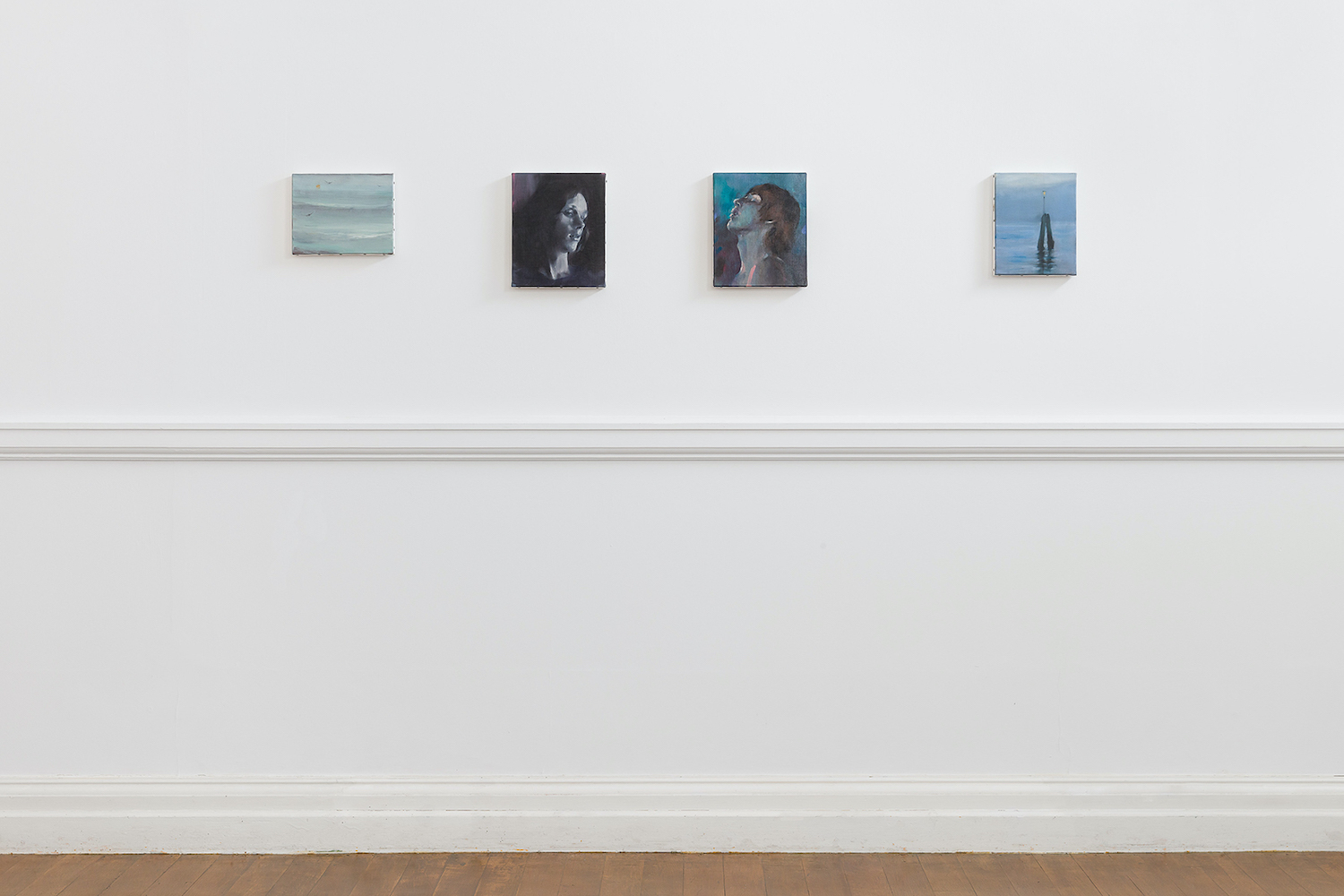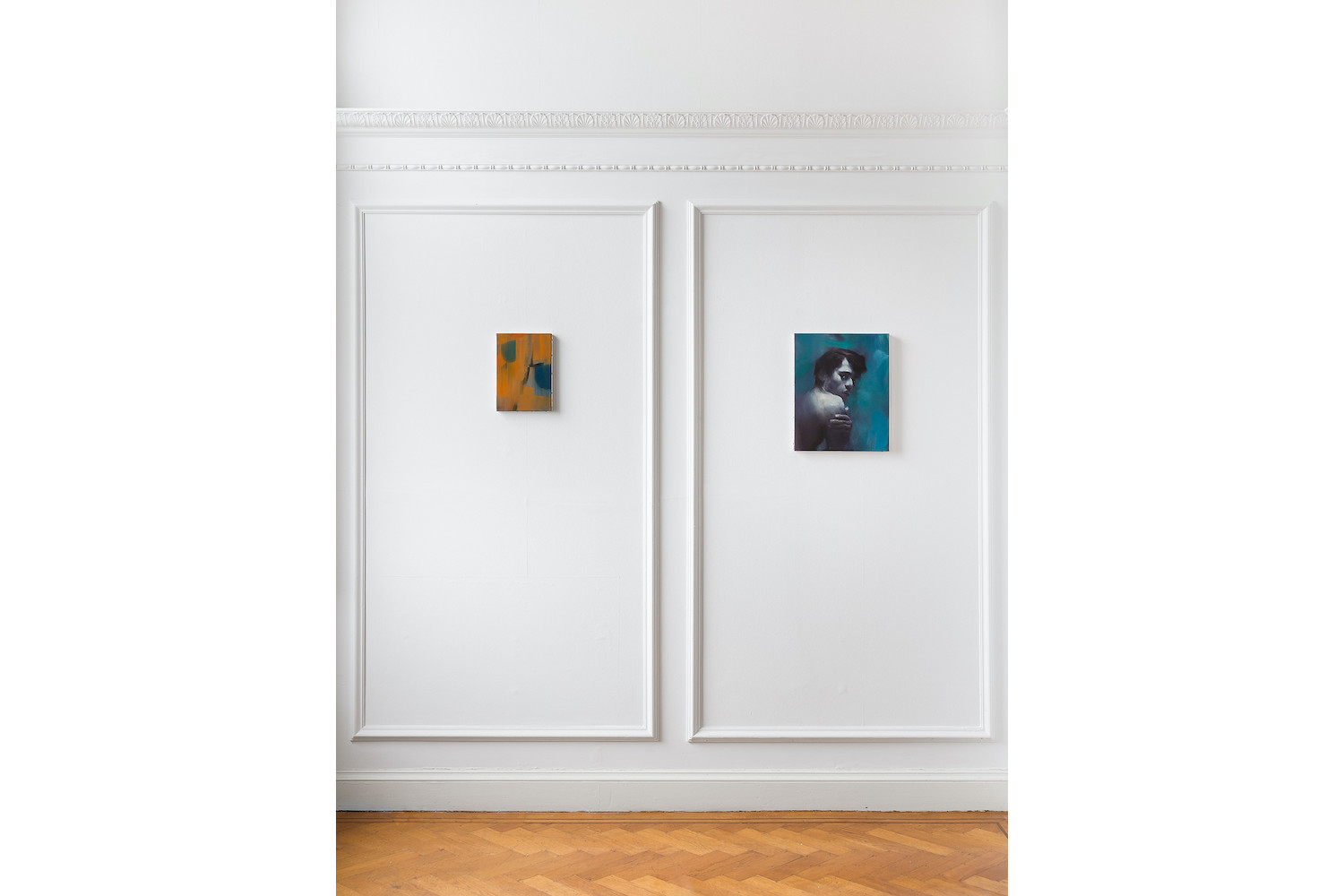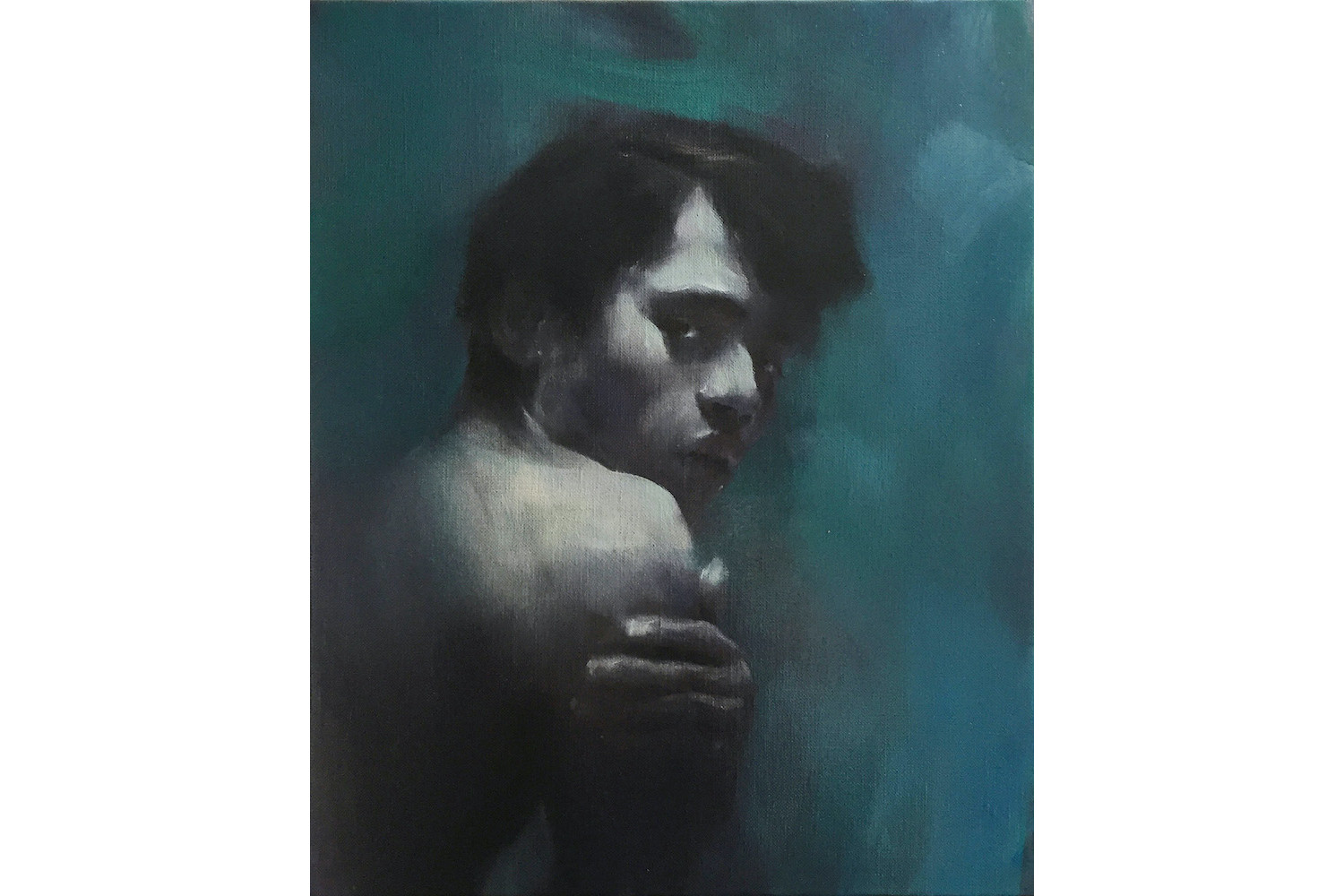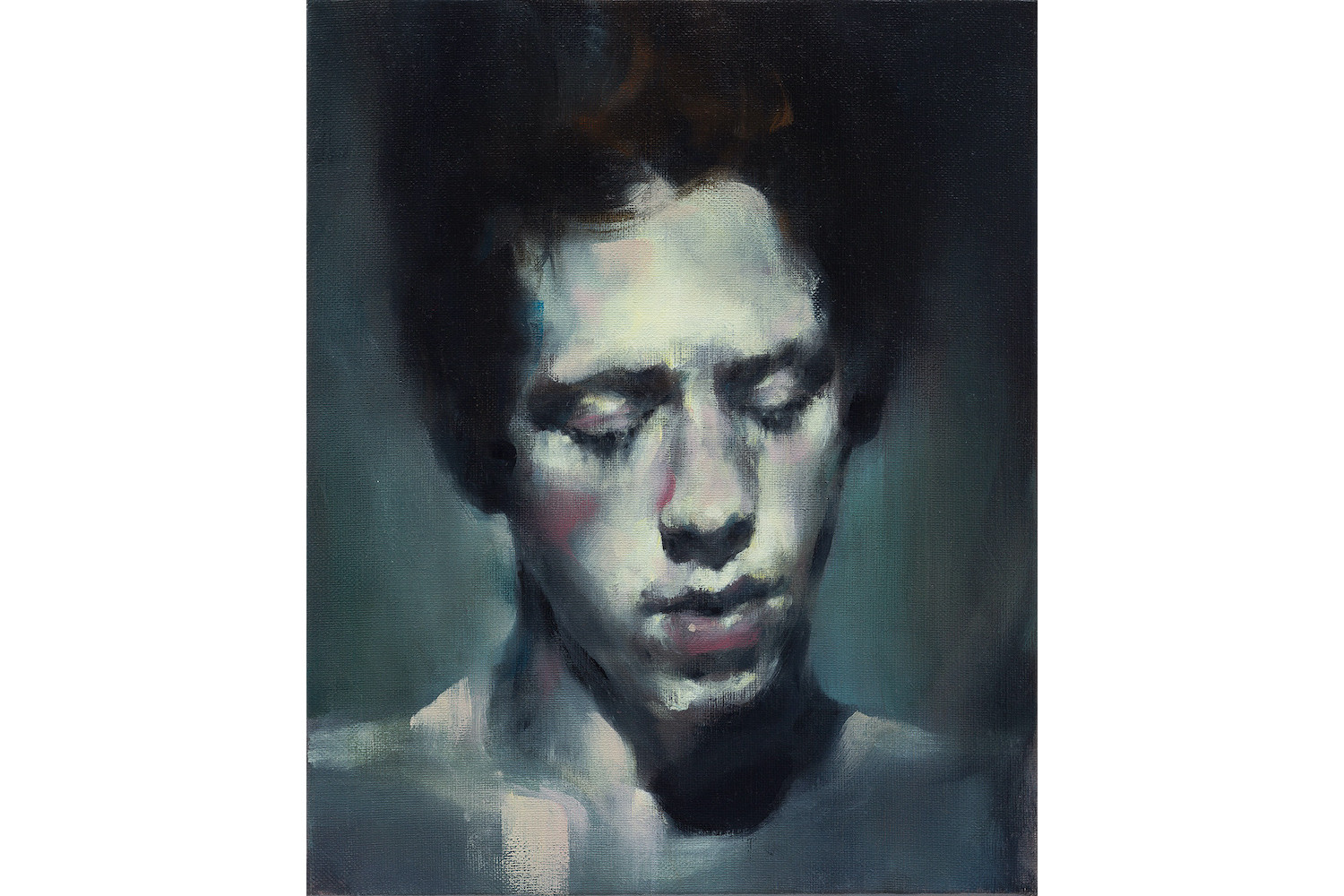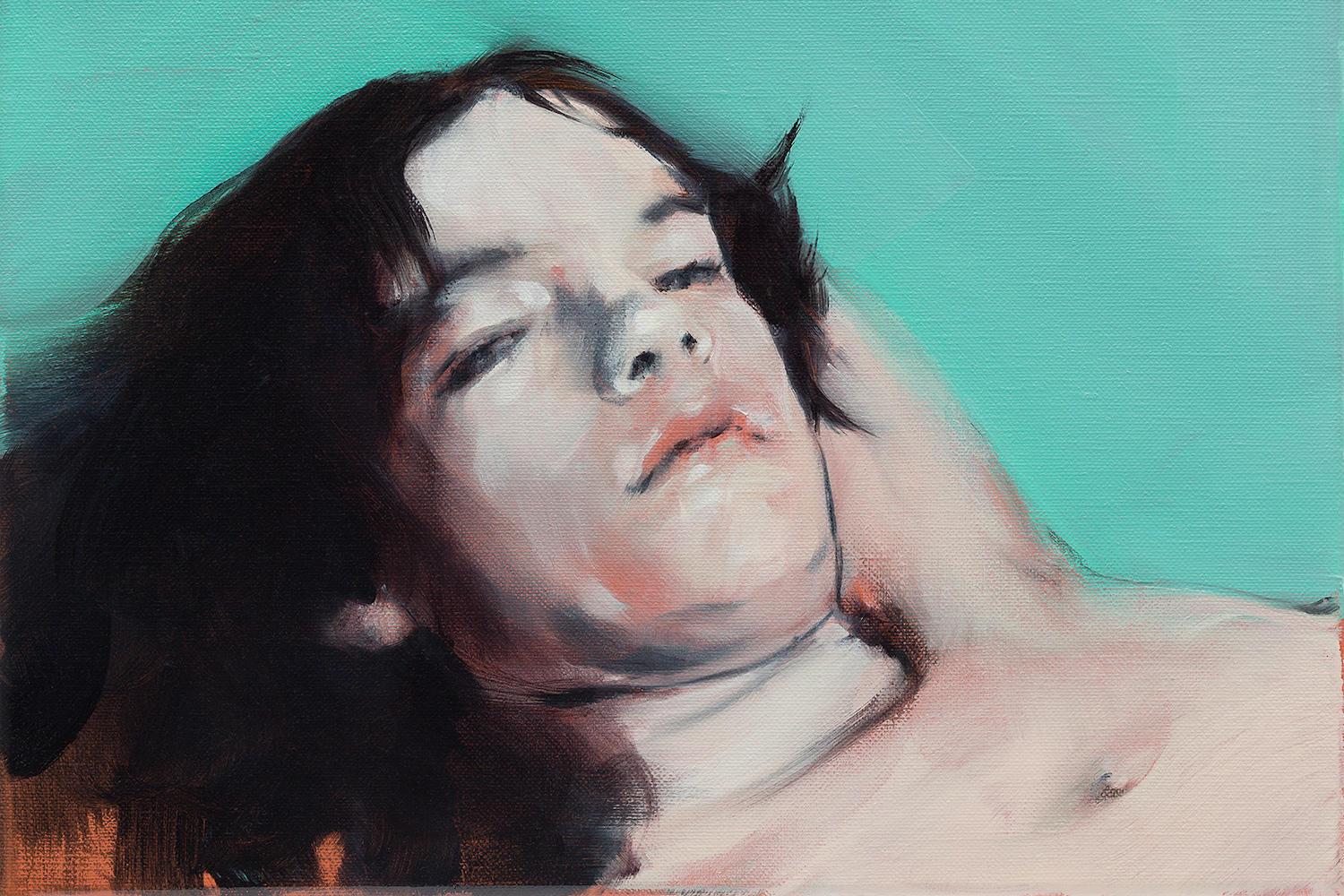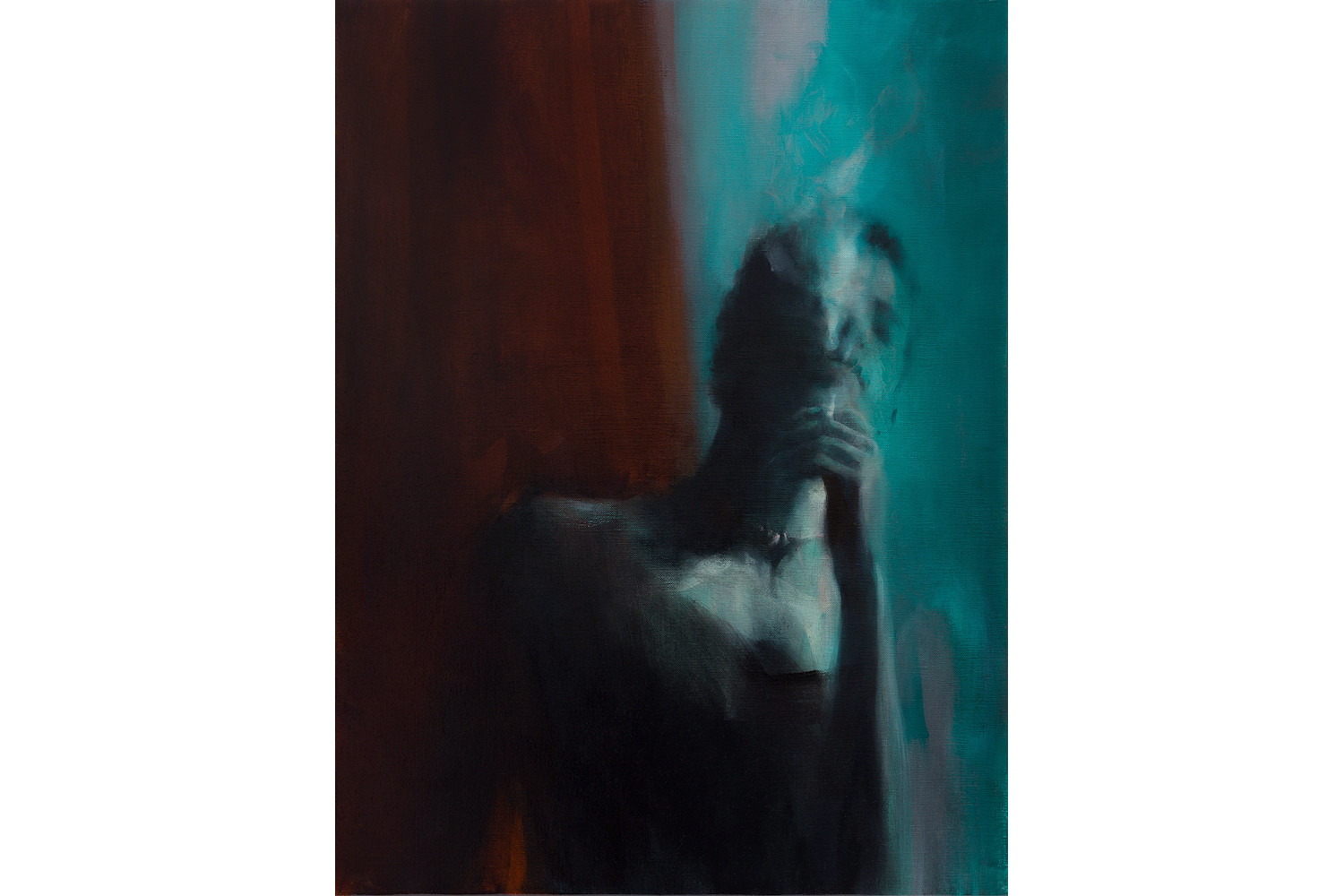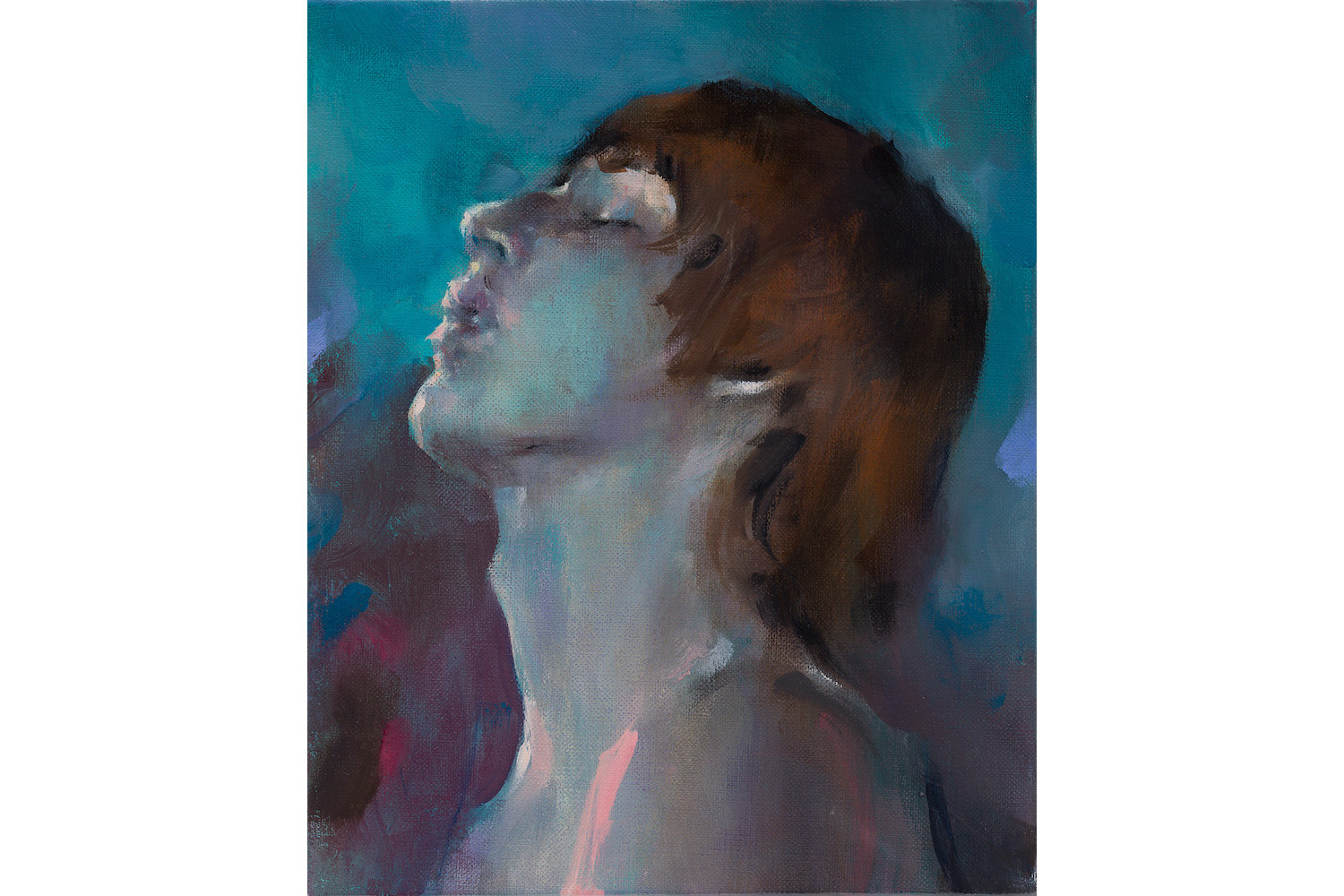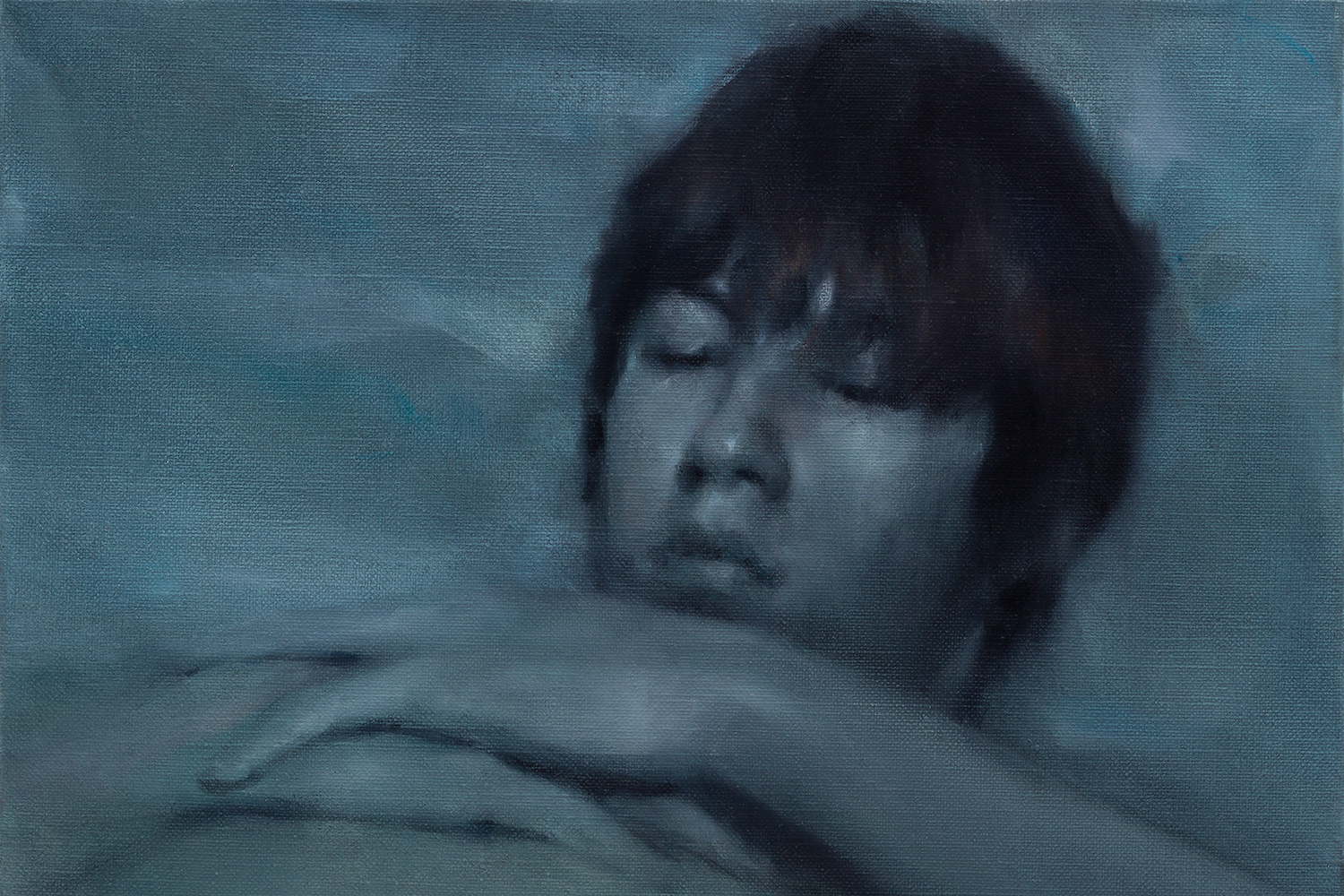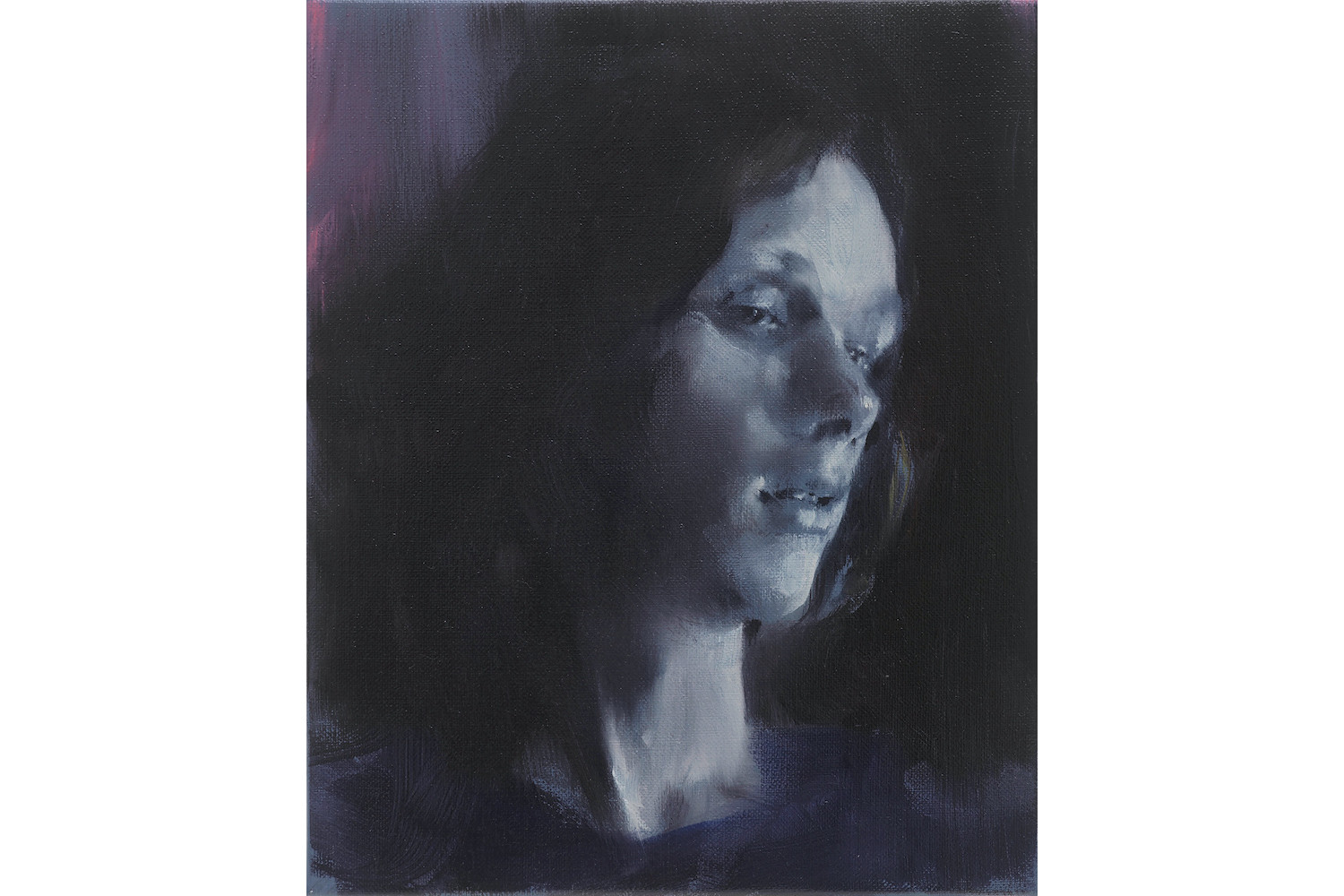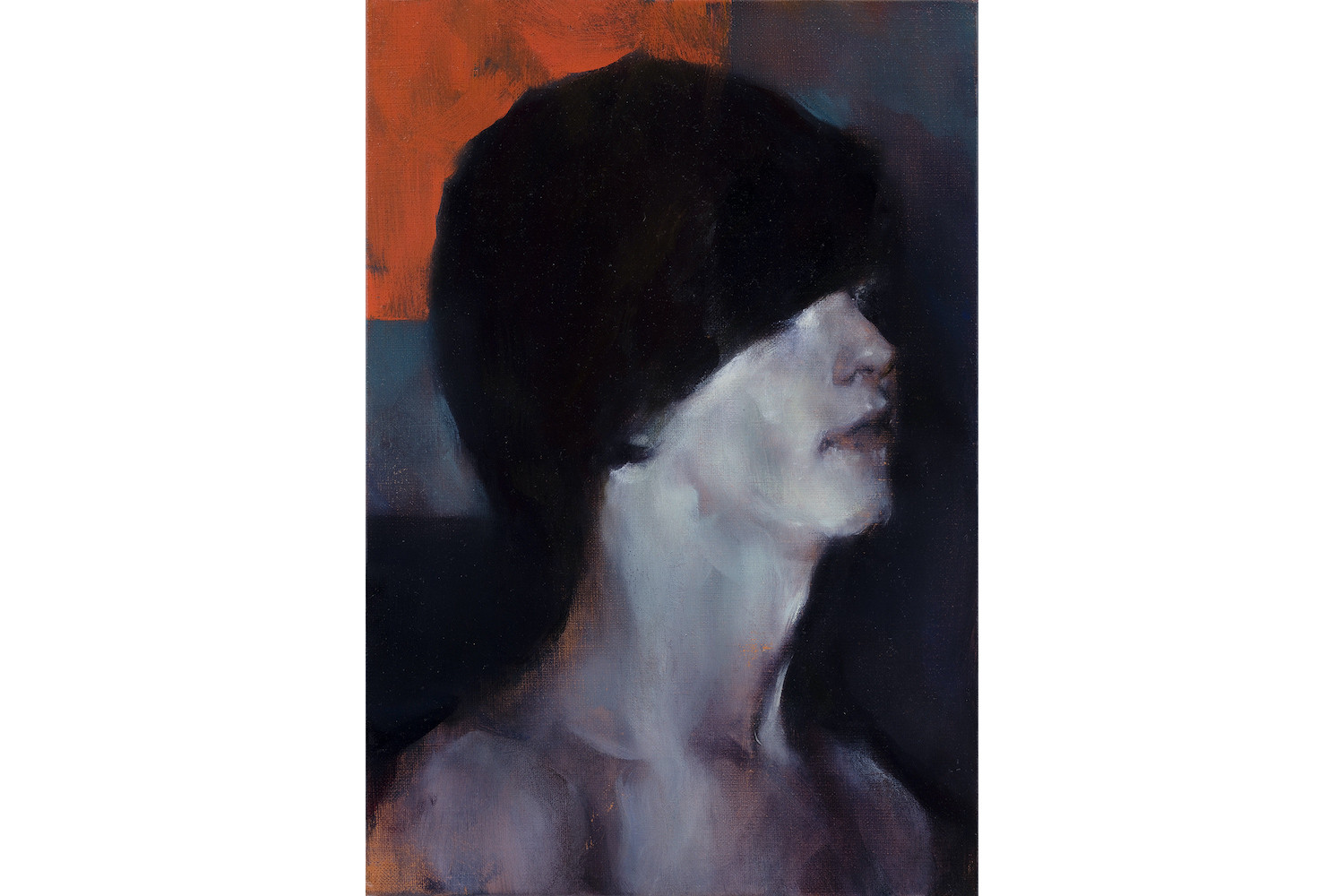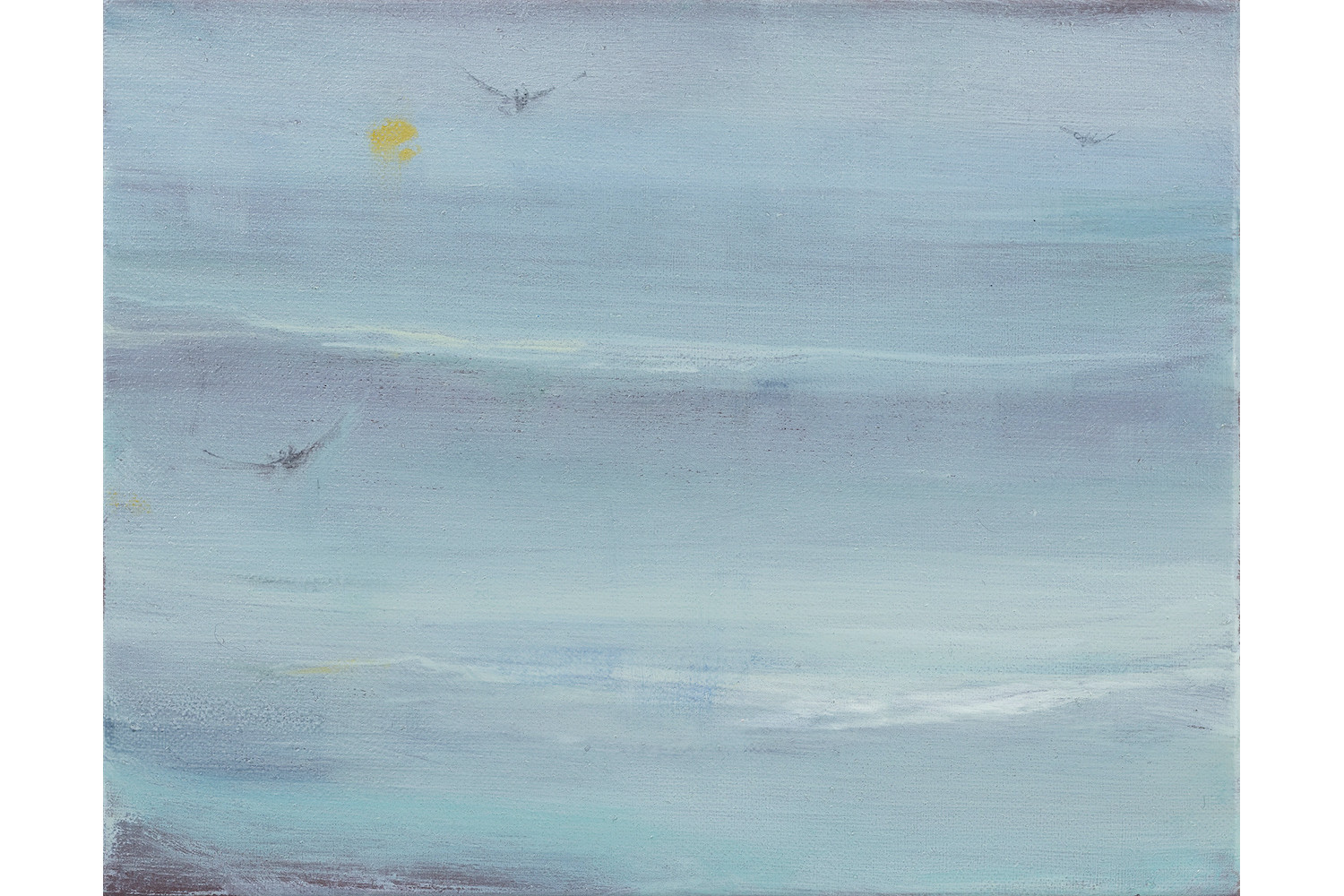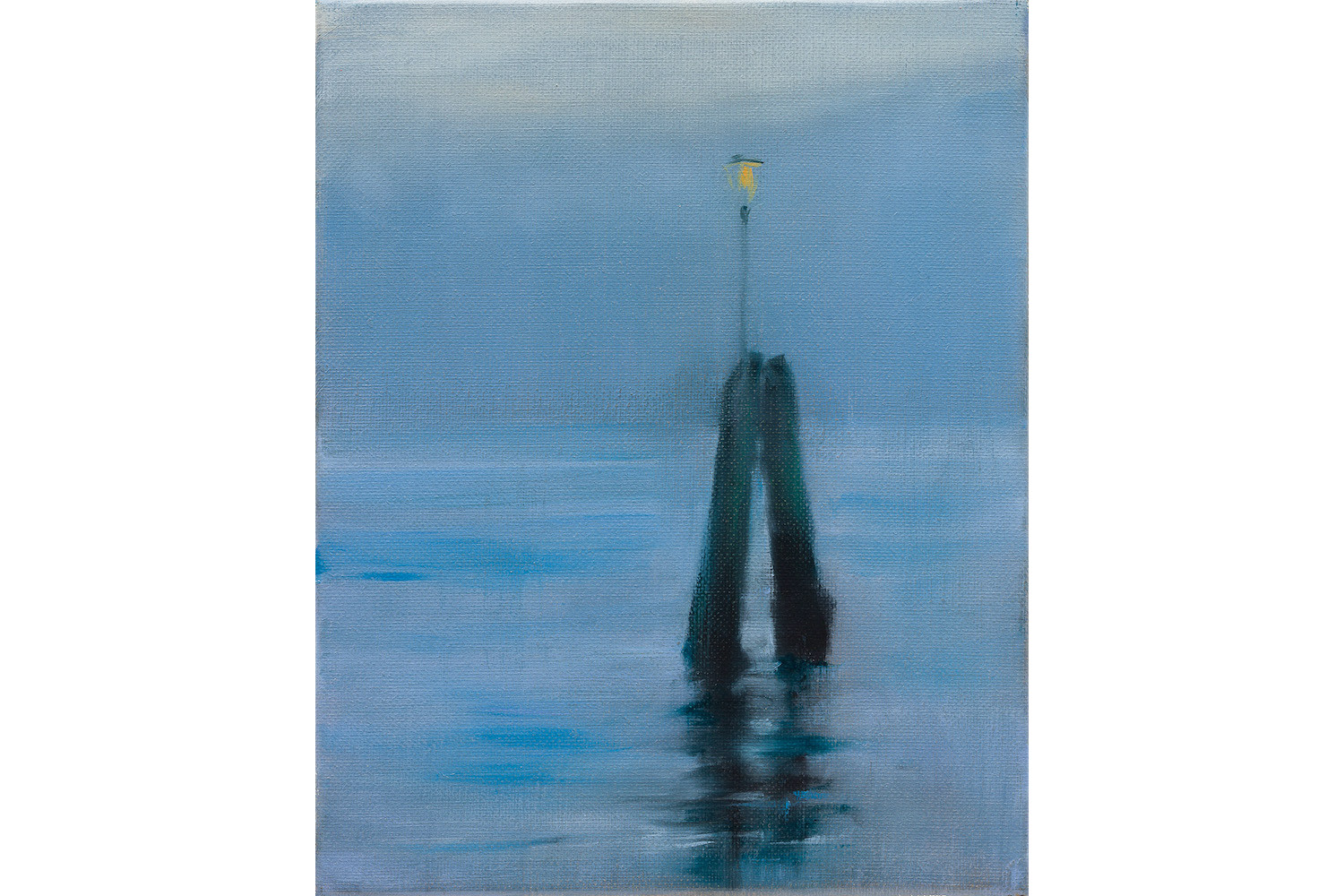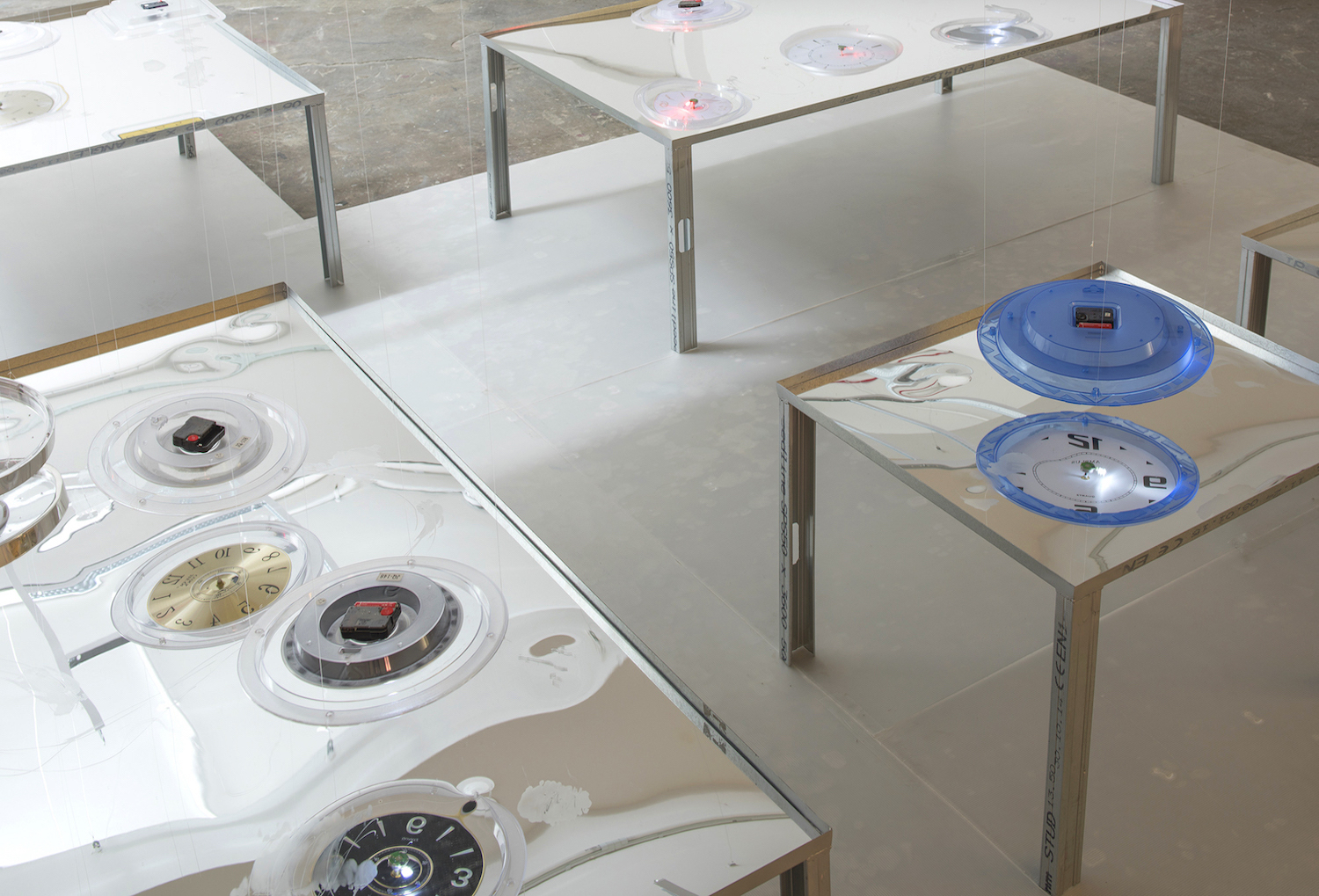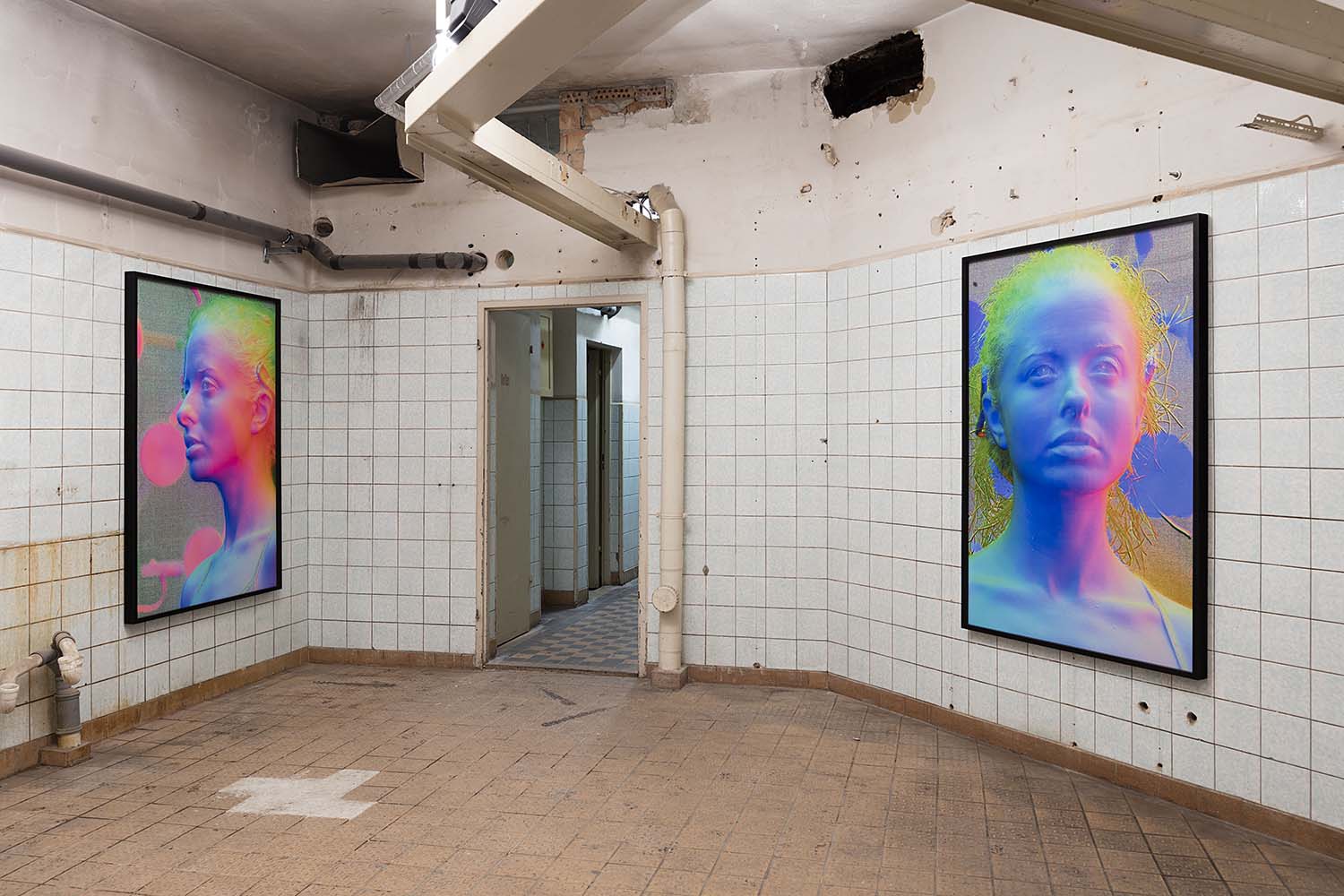In the face of it: rain shower, blustering waves and foreseeable spume, the sea soon cast the wetness of time in its quivering, vacant, and vitric way. But when facing the paintings of Paul P., I’m reminded that time’s more harmonious bedfellow is often light: the flattening film of hard shine, the derealizing quality of shimmers. Limned with grace and dimmed by velvety effulgence, P.’s oils conjure the recitation and resignification of figures — near erasure, now risen — from queer history. P.’s window of reference is framed between the early gay liberation of the 1960s and the beginning of the AIDs epidemic of the early 1980s. Typically sourced from gay erotica magazines, photocopied photographs reconstructed as oil paintings, the outcomes are echoes of the gossamer glow of John Singer Sargent and the seas of James Abbott McNeill Whistler; somewhere in the midst, P. manifests a knowing subject of misty and ethereal luster.
Washed in a cool haze, the cheek of Untitled (2019) is iced in strokes of turquoise, the outline of his profile petted with milky astral glimmers, his head tossed back in post-coital apathy. Another subject’s possible timidity is cushioned by or cocooned within a plush accumulation of teal and shrouding blues, his raven-black hair and lit-chalk shoulder offset by his consoling hand, tempered by our unmet gaze. Another lays supine and subsumed in bruised plum shades, his mouth slack. Others are suffused with a dissolute and divested air or a coy and undressing gaze. One portrait is bookended by a polychromatic and a monochrome study, manifesting the architectures and atmospheres of Venice, Italy, and Venice Beach, California (neatly compounded by Hove’s coastline), each historical sites of provisional refuge, small worlds in common for P.’s figures. While Untitled (2012) reflects the inseparability of sea and sky, another of citrus yellow figures as a description of light itself.
While each portrait is discrete, they shore up the implicit to become shadowy, pearlescent, and enlivening records of queer life. Set within clouded or pillowy backdrops, P.’s subjects, whose faces hold light like glossy flames or smoked glass, recognize the problematics of how one might represent historical queer subjects as persisting in the present, how elements of a history may be brought to light. P.’s paintings imply that to persist may paradoxically involve the will to withdraw, that a reflection on any history is enriched by the inflections of things untold — by failures, flings, and falterings that defy our touch in the present; perpetuity may look holographic.
In P.’s paintings we might see queer visibility as something closer to queer appearance or queer visuality, painting as temporal motion that refuses total clarification or closure and yet provides a realm in which to persist. The interruption of the past can offer an affirmation in the present or the anticipation of a different and more complex horizon for the future. P.’s seascapes show that horizon line trembling, a faded spine for bridging evanescent worlds, something which is indeterminate and enduring.

